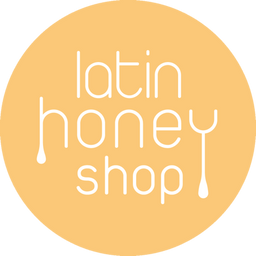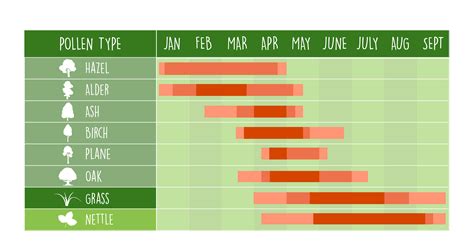The Different Types of Hay Fever
Hay fever, also called seasonal allergic rhinitis, affects millions of people in the UK every year. It causes symptoms like sneezing, itchy eyes, a runny nose, and even tiredness. These reactions are caused by the body’s response to pollen — a fine powder released by plants.
To manage hay fever better, it helps to understand what type of pollen causes your symptoms and when pollen levels are highest.
Types of Pollen in the UK
In the UK, the three main sources of pollen that cause hay fever are:
- Tree pollen
- Grass pollen
- Weed pollen
Each type of pollen has its own season — or time of year — when it’s most active.
Tree Pollen
Tree pollen season usually starts in late March and can last until mid-May. It is often the first type of pollen to appear in the year.
Common trees that trigger hay fever include:
- Birch – Peaks in April to May
- Hazel – Can begin as early as late February
- Alder – Often active in early spring
- Oak – Peaks in May
Grass Pollen
Grass pollen is the most common cause of hay fever in the UK. The season usually starts in mid-May and lasts until July, with a peak in June.
There are two waves of grass pollen:
- First wave – Appears in May and June
- Second wave – Occurs in late June and July
Weed Pollen
Weed pollen appears later in the year. The season begins around late June and can continue into September.
Common weeds that release pollen include:
- Nettle – Peaks between June and August
- Dock
- Mugwort – Active in late summer
- Plantain
UK Pollen Calendar at a Glance
| Month | Tree Pollen | Grass Pollen | Weed Pollen |
|---|---|---|---|
| January | - | - | - |
| February | Hazel, Alder | - | - |
| March | Hazel, Alder | - | - |
| April | Birch, Oak | - | - |
| May | Birch, Oak | Starts mid-May | - |
| June | - | Peak season | Starts late |
| July | - | Continues | Active |
| August | - | Low levels | Peak season |
| September | - | - | Still present |
Tips to Manage Hay Fever
- Check daily pollen forecasts
- Keep windows and doors closed during high pollen times
- Wear sunglasses to protect eyes from pollen
- Shower and change clothes after being outside
- Use air purifiers at home
-
Try honey high in light pollen to relieve hay fever symptoms
Which honey is effective for hay fever?
Contrary to widespread belief, local honey is actually ineffective in building resistance to pollen. This is because most hay fever is usually caused by light grass and tree pollen.

Bees, on the other hand, feed on heavy flower pollen, not light grass and tree pollen.

Raw organic honey that is produced by countries with a rich diversity of plants can produce a much higher pollen count per teaspoon.
Over half the world's plant species exist in tropical rainforest zones such as Latin America.

When the honey is raw it is still alive. It has not been heated above 37C, which kills the beneficial living nutrients that the honey possesses.
And certified organic honey is the gold standard of purity when it comes to honey. It is safe from pollutants and pesticides which make hay fever worse.
The honey should be unfiltered. Filtered honey as found in the clear, runny honeys on supermarket shelves has had the beneficial pollen removed from it.
Local honey, especially from countries like the UK, is also ineffective on hay fever because it is high in pollutants and pesticides and has a low pollen count of high quality pollen.
How do you use raw organic honey for relief from hay fever symptoms?
Hundreds of customers have told us that our Raw Organic Red Gumbo Limbo Honey from Mexico has helped relieve their hay fever symptoms after all other remedies have failed. Search Tiktok for "Red Gumbo Limbo Honey" and be amazed at the customer videos on there.
One customer told us:
"For seven years I have suffered from severe hay fever. I tried steroids, medication, manuka honey, sidr honey and other raw and organic honeys but none worked for me as the Raw Organic Red Gumbo Limbo Honey from the Latin Honey Shop. It instantly hit my hay fever."
Another customer review said:
"Beats hay fever like a bullet!"
The thing is we don't exactly know why it works. Perhaps this honey contains a type of flower pollen which is similar to light grass pollen?
Take a teaspoon of Raw Organic Red Gumbo Limbo Honey and mix it into a glass of cold or warm water every morning 30 minutes breakfast and up to three times a day in total. Always in water, always before meals.
Water activates the nutrients of raw organic honey and the 30 minutes allows the body to absorb it fully before any other food enters it.
If you are out and about, keep a jar of Raw Organic Red Gumbo Limbo Honey in your bag and eat it neat to relieve your symptoms. It is also effective in soothing a tickly throat and easing any constriction of air ways.
It is made by bees feeding 3000 feet high in the Sierra Madre mountains of northeast Mexico. Organic mountain honey from Latin America has one of the highest pollen counts in the world and is also renowned for its high nutrient value.
Raw Organic Red Gumbo Limbo Honey from the Sierra Madre mountains of Mexico is available exclusively from the Latin Honey Shop.
NOTE: In accordance with EU directive 1924/2006 we are unable to make any health claim about any of our honeys. Specifically, EU 1924/2006 does not recognise honey as a solution for hay fever. The information given above is either background information about the plants from which our honey comes, or anecdotal based on customer reviews. Unless where specifically mentioned, none of the statements above have been clinically proven in scientific trials and none of these statements constitute a claim or a guarantee as to any health benefit.
Final Thoughts
Hay fever may be frustrating, but with the right knowledge, you can prepare for the different types of pollen and their peak times. Whether it’s tree pollen in spring, grass pollen in summer, or weed pollen in late summer, knowing what affects you most can help you reduce symptoms and enjoy the outdoors more comfortably.





